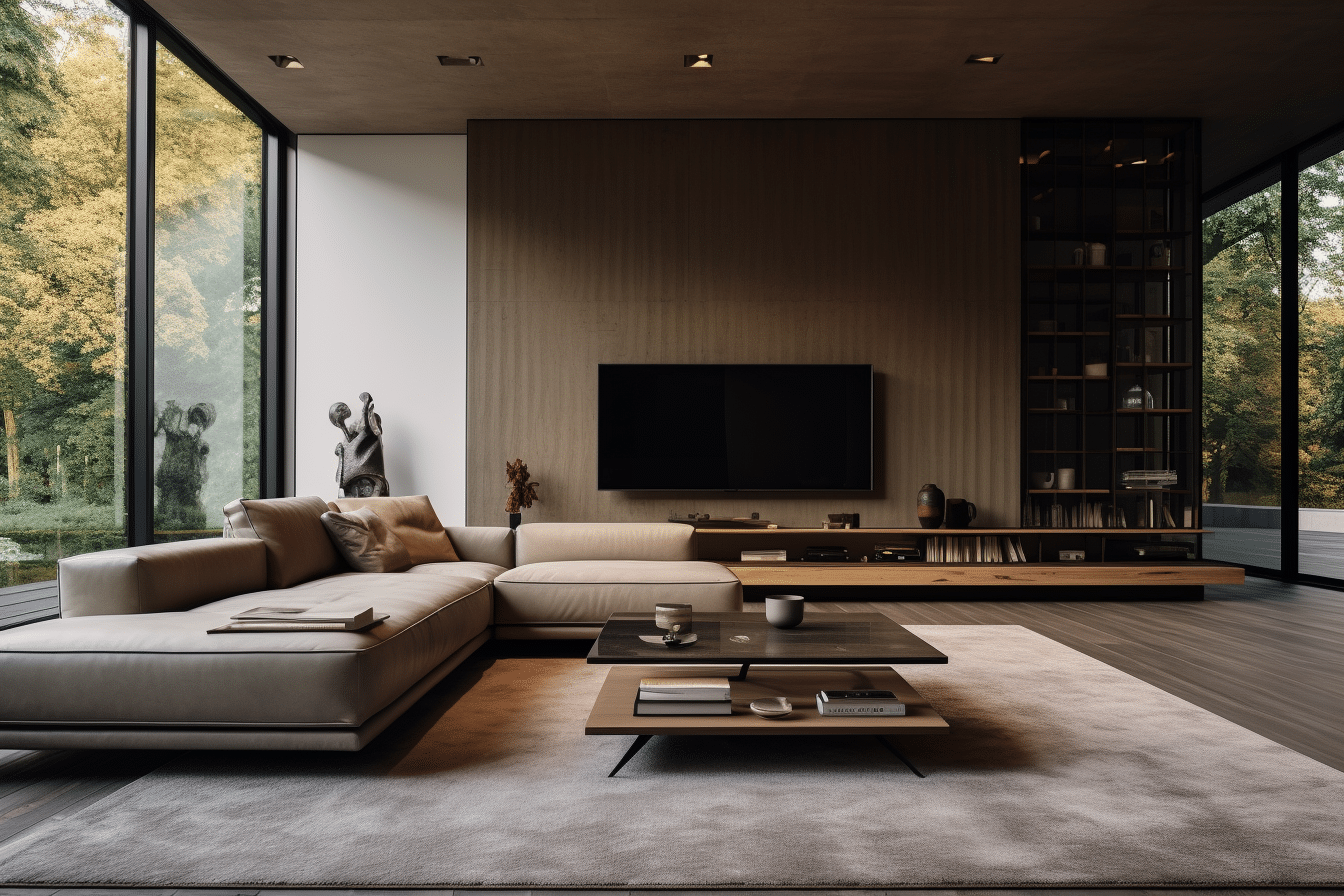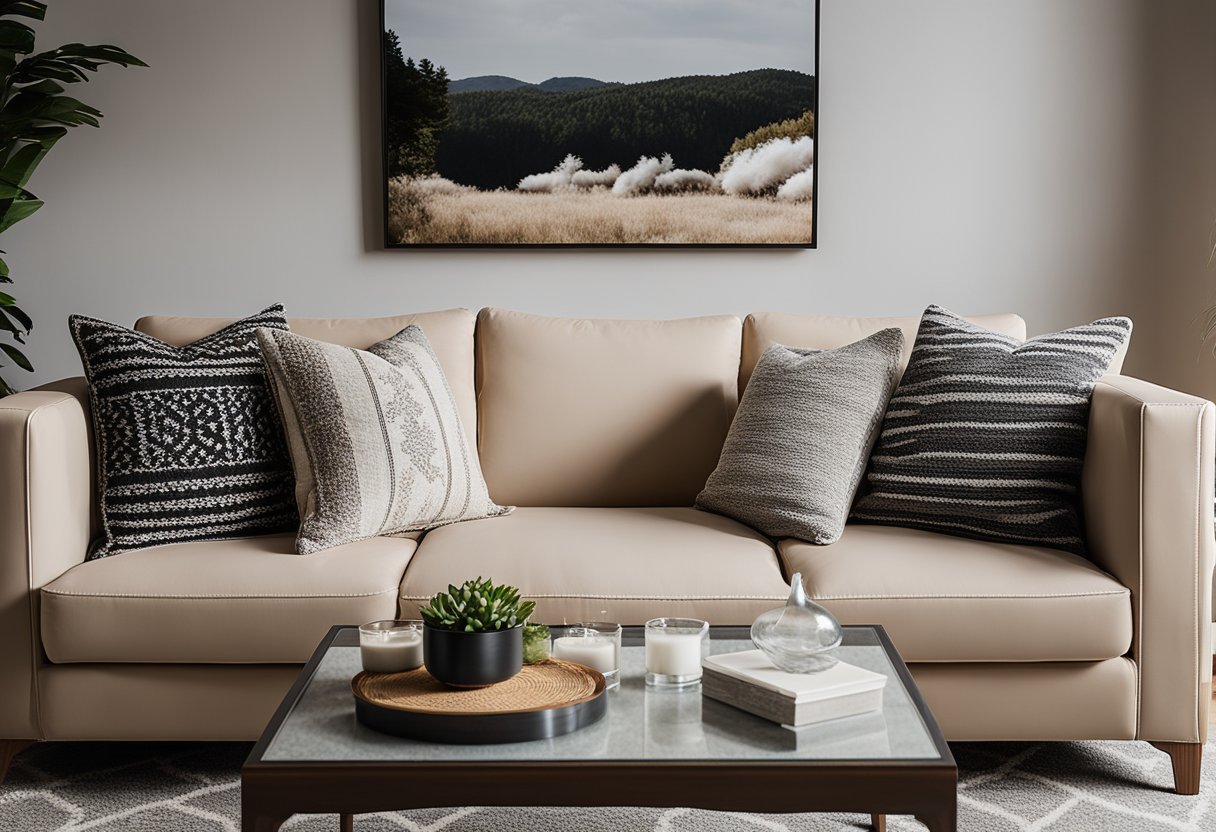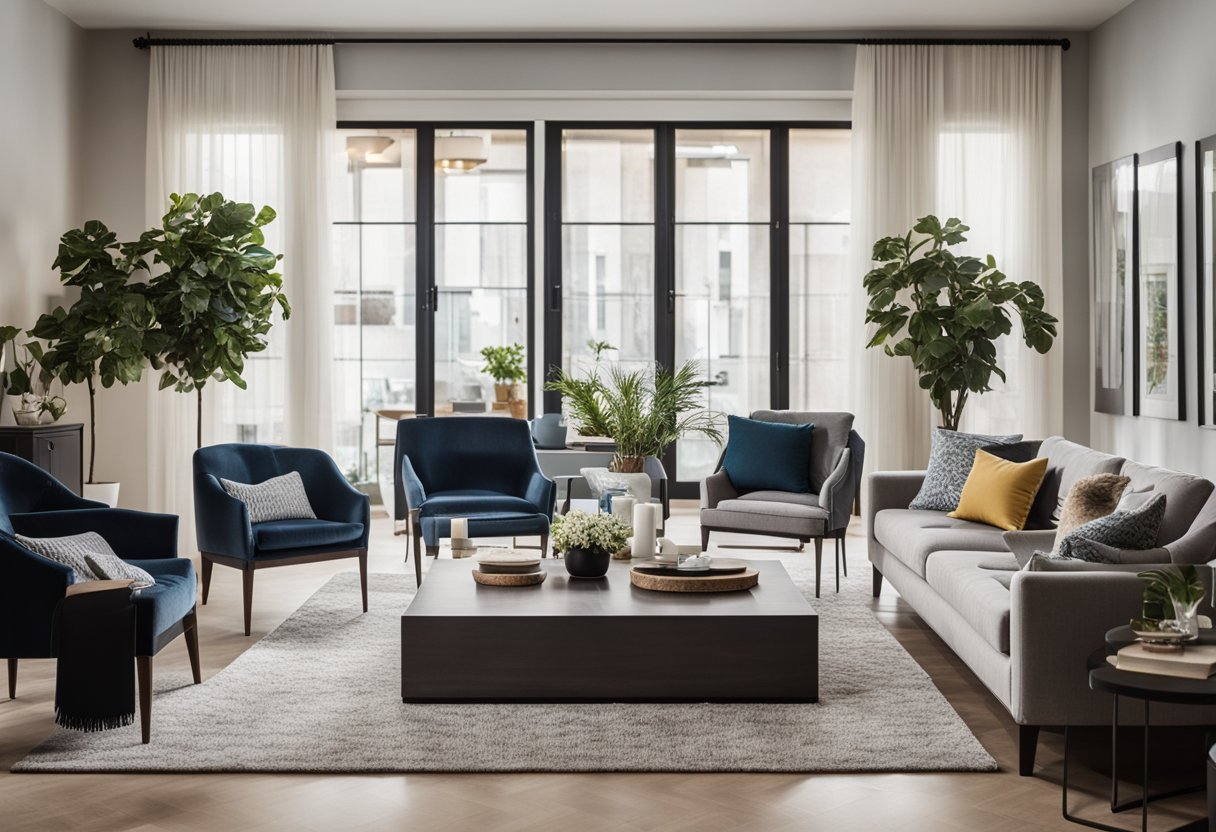
DIY Staging Tips for Living Rooms: Transform Your Space with These Expert Techniques
When it comes to selling your home, first impressions matter. One of the most important rooms to stage is the living room, as it is often the first space potential buyers see. Staging your living room can help create a warm and inviting atmosphere and make it easier for buyers to envision themselves living in your home. Follow along to learn these DIY staging tips for living rooms.

If you’re looking to stage your living room on a budget, there are plenty of DIY tips and tricks you can use to transform the space. Decluttering and deep cleaning are essential first steps, as they can help create a blank canvas for potential buyers. From there, you can focus on furniture placement, adding decor, and even painting to create a cohesive and welcoming space. By following these tips, you can create a living room that will appeal to a wide range of buyers.
Remember, staging is all about highlighting your home’s best features and creating a space that potential buyers can see themselves living in. Putting in a little time and effort can transform your living room into a showpiece that will help sell your home quickly and for top dollar.
The Importance of Staging
When it comes to selling your home, staging is an essential part of the process. Staging your living room can significantly affect how potential buyers perceive your home. It can help them visualize themselves living in the space and make your home stand out from others on the market.
Staging involves making your home look its best by arranging furniture, adding decor, and creating a welcoming atmosphere. It helps buyers see the potential of your home and encourages them to make an offer. In fact, staged homes often sell faster and for more money than those that aren’t staged.
When potential buyers walk into your living room, they want to see a clean, inviting, and functional space. They want to imagine themselves relaxing in the room and spending time with family and friends. By staging your living room, you can create an environment that appeals to a wide range of buyers.
Home staging is especially important in a real estate transaction because it can help you sell your home faster and for a higher price. By investing a little time and effort into staging your living room, you can increase the value of your home and attract more potential buyers.
In summary, staging your living room is an essential part of the home selling process. It can help you sell your home faster and for a higher price by creating a welcoming atmosphere that appeals to potential buyers. By taking the time to stage your living room, you can make your home stand out from others on the market and increase your chances of a successful sale.
Basic Principles of Staging
When it comes to staging your living room, there are some basic principles that you should keep in mind. These principles can help you create a space appealing to potential buyers and increase the chances of a successful sale.
Declutter and Clean
One of the most important principles of staging is to declutter and clean your living room. This means removing any unnecessary items and ensuring that the space is spotless. A cluttered and dirty living room can be a major turn-off for potential buyers, so it’s important to take the time to clean and organize the space.
Neutral Colors and Design Choices
Another important principle of staging is to choose neutral colors and design choices. This can help create a space appealing to a wide range of buyers and make it easier for them to imagine themselves living in the space. Neutral colors can also help to make a room feel larger and more open.
Furniture and Decor
When it comes to furniture and decor, it’s important to strike a balance between creating a welcoming space and keeping things simple. Too much furniture or decor can make a space feel cluttered, while too little can make it feel cold and uninviting. A professional stager can help you strike the right balance and make the most of your furniture and decor.
First Impression
Remember that the first impression is crucial when it comes to staging your living room. Potential buyers will form an opinion of your home within seconds of entering the space, so it’s important to create a welcoming and inviting atmosphere right from the start. Pay attention to details like lighting, artwork, and mirrors to create a warm and welcoming space.
Staging Process
Finally, remember that staging is a process that takes time and effort. It’s important to be patient and to work with a professional stager if you need help. The National Association of Realtors recommends that sellers spend 1-3% of the home’s value on staging, so be prepared to invest in the process if you want to see results.
DIY Staging Tips for Living Room
When it comes to selling your home, staging your living room is crucial. It’s the space where potential buyers will spend most of their time, so it’s important to make it look as inviting and spacious as possible. Here are some DIY staging tips for your living room that can help you create a welcoming atmosphere that will impress buyers.
Declutter
The first step in staging your living room is to declutter. Remove any unnecessary items, such as old magazines, toys, and knick-knacks. This will make the room look more spacious and organized. Consider renting a storage unit to keep your excess belongings until you move.
Let in Natural Light
Natural light can make a room look brighter and more inviting. Open your curtains or blinds to let in as much natural light as possible. If your living room doesn’t have much natural light, consider adding floor or table lamps to brighten it up.
Add Statement Pieces
Statement pieces can add character and interest to your living room. Consider adding a unique piece of artwork, a colorful rug, or a bold accent wall. However, be careful not to go overboard with too many statement pieces. Stick to one or two per room.
Use Mirrors
Mirrors can make a room look larger and brighter. Hang a large mirror on one of the walls to reflect natural light and create the illusion of more space.
Incorporate Plants
Plants can add life and color to your living room. Place a few potted plants on shelves or tables to create a natural, inviting atmosphere. If you don’t have a green thumb, consider using artificial plants instead.
Clean and Dust
Make sure your living room is clean and dust-free. Dust your furniture, shelves, and knick-knacks. Vacuum your rugs and upholstery. A clean living room will make a better impression on potential buyers.
Rearrange Furniture
Consider rearranging your furniture to create a more open and spacious layout. If your living room is small, remove any unnecessary furniture to make it look larger. If you have a large living room, create multiple seating areas to make it look cozier.
Create Vignettes
Vignettes are small, curated displays that can add interest and personality to your living room. Create a vignette on your coffee table or bookshelf using items like books, candles, and decorative objects.
By following these DIY staging tips for your living room, you can create a warm, inviting space to impress potential buyers. Remember to keep it simple, clean, and clutter-free, and focus on creating a spacious and welcoming space.
Advanced Staging Techniques

When it comes to staging your living room, a few advanced techniques can take your DIY staging to the next level. Here are some tips to help you create a space that is both functional and beautiful:
1. Create a Focal Point
A focal point is an area in the room that draws the eye and creates a sense of visual interest. This could be a piece of artwork, a fireplace, or even a unique piece of furniture. Once you have identified your focal point, arrange your furniture around it to create a sense of balance and harmony in the room.
2. Use Lighting to Your Advantage
Lighting is an important element in any room, and it can be used to create a sense of warmth and coziness in your living room. Use a combination of overhead lighting, lamps, and natural light to create a layered effect that is both functional and beautiful.
3. Add Greenery
Plants and flowers can add a touch of natural beauty to your living room and help purify the air. Choose plants that are easy to care for, such as succulents or snake plants, and place them in attractive pots or vases.
4. Incorporate Statement Pieces
Statement pieces, such as a bold area rug or a unique piece of artwork, can add personality and style to your living room. Choose pieces that reflect your personal taste and style, and use them to create a focal point in the room. One place to find unique artwork or furniture pieces is Etsy.
5. Keep it Clutter-Free
Clutter can detract from the beauty of your living room, so it’s important to keep the space clean and organized. Use storage solutions, such as bookcases or cabinets, to keep clutter at bay and remove any unnecessary items from the room.
By incorporating these advanced staging techniques into your DIY home staging process, you can create a living room that is both functional and beautiful. Remember to keep the space clutter-free, use lighting to your advantage, and incorporate statement pieces to create a space that reflects your personal style and taste.
Working with Professionals

If you’re not confident in your DIY staging skills or don’t have the time, consider working with a professional stager. These experts can help you create a space that appeals to potential buyers and maximizes your home’s value.
According to the National Association of Realtors, staging can increase the sale price of a home by up to 10%. A professional stager can help you achieve this by bringing in furniture and decor that complements your home’s style and highlights its best features.
When choosing a professional stager, it’s important to do your research. Look for someone with experience working in your area and a track record of success. You can ask for recommendations from your real estate agent or search for local stagers on sites like HomeLight.
It’s also important to ensure that the stager you choose has editorial integrity. Forbes recommends asking for references and checking their portfolio to ensure that they have a consistent style and quality of work.
Working with a professional stager can be a great investment in the sale of your home. However, it’s important to keep in mind that it is an additional expense. Be sure to discuss pricing and services with your stager upfront so that you can make an informed decision.
Whether you choose to stage your home yourself or work with a professional, staging is an important part of the real estate transaction process. It can help your home stand out in a competitive market and appeal to potential buyers.
DIY Staging Tips for Living Rooms – Final Thoughts

Congratulations! You have successfully completed the DIY home staging process for your living room. Following the tips and tricks outlined in this article has created a warm and inviting space that potential buyers will love.
Remember that staging is all about creating a first impression that will last. You want buyers to walk in and immediately feel at home. By decluttering, deep cleaning, and strategically placing furniture and decor, you have set the stage for a successful real estate transaction.
It’s important to note that while DIY staging can be effective, hiring a professional stager can take your home to the next level. According to the National Association of Realtors, staged homes sell 88% faster and for 20% more than non-staged homes. If you’re not confident in your design choices or simply don’t have the time to stage your home yourself, consider hiring a professional.
Finally, don’t forget about curb appeal. The exterior of your home is the first thing potential buyers will see, so make sure it looks its best. Add some fresh mulch, trim the shrubs and trees, and consider adding some potted plants or flowers to the front porch.
Thank you for reading, and best of luck with your home sale!
Luxury Specialist at McGraw Realtors
With a diverse background, including a career as an Air Force fighter pilot and entrepreneurship, Bill transitioned to real estate in 1995. Co-founding Paradigm Realty with his wife, Charlene, he quickly rose to prominence in Oklahoma City’s luxury real estate scene. Now, as one of the top agents with annual sales surpassing $20 million, Bill’s dedication to exceptional service remains unparalleled. With a legacy spanning over two decades in the industry, Bill’s expertise and commitment make him a trusted name in luxury real estate.